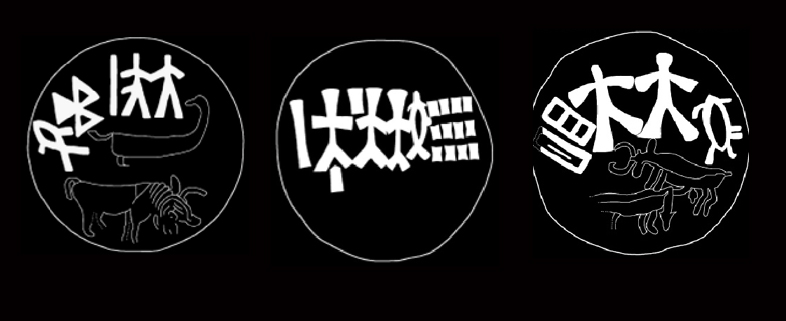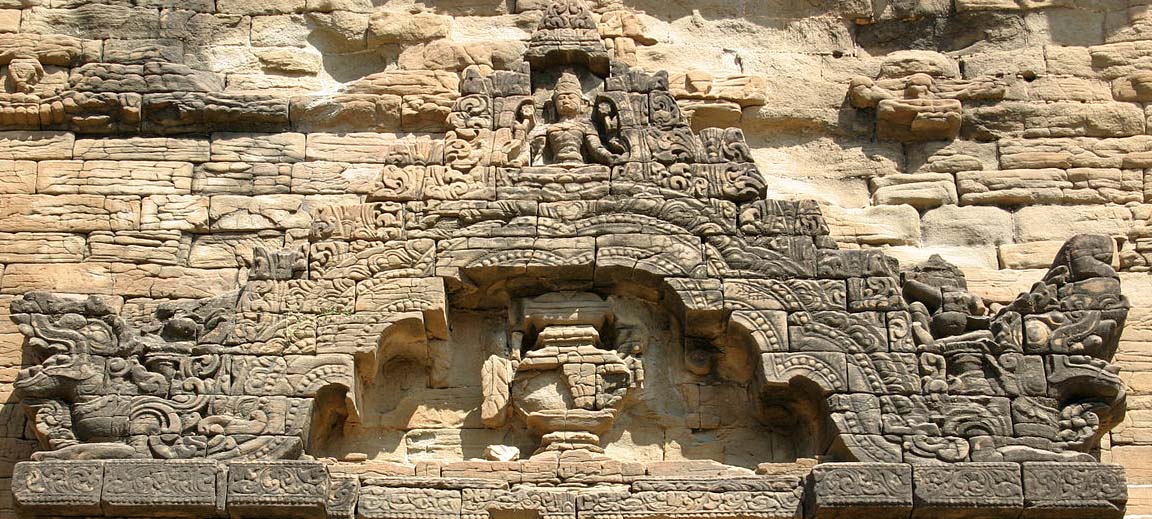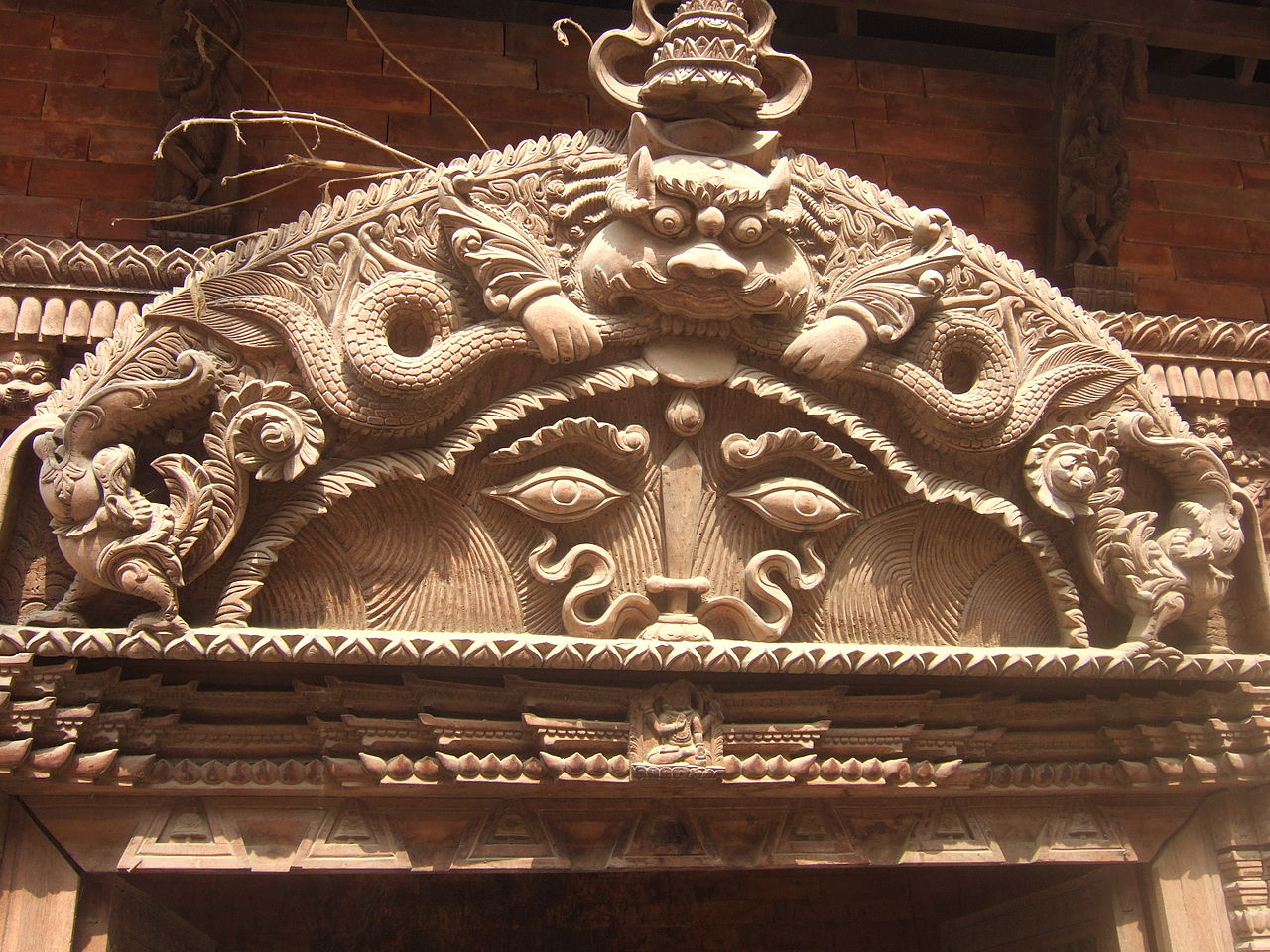It looks like you're using an Ad Blocker.
Please white-list or disable AboveTopSecret.com in your ad-blocking tool.
Thank you.
Some features of ATS will be disabled while you continue to use an ad-blocker.
22
share:
The 'water monster vehicle' conveys the deepest of the deep secrets...beyond all understanding.
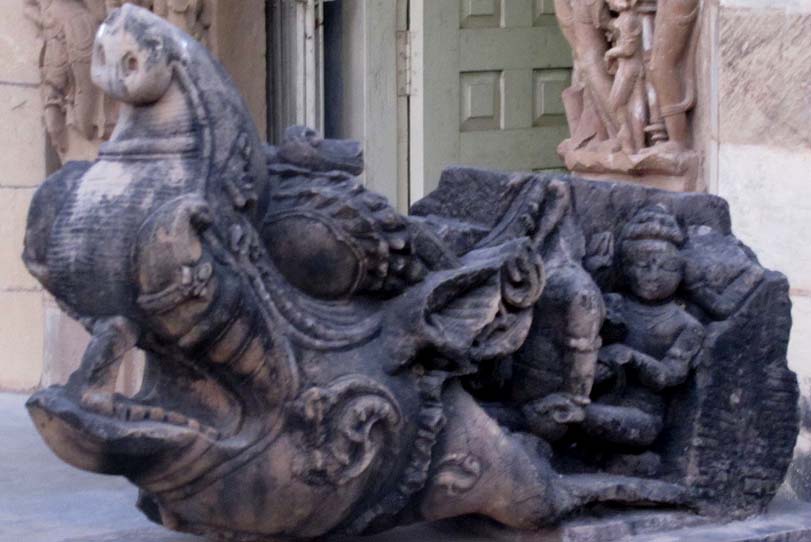
My research here is derived from trying to understand the reasoning behind Planetary Exaltations, or the secret places of the planets in astrology were they are most empowered, everyone knows were they are understood to have been located without knowing why, in particular i wanted to understand Mars being exalted in 28 degrees Capricorn and Venus having her secret place at 27 degrees Pisces.
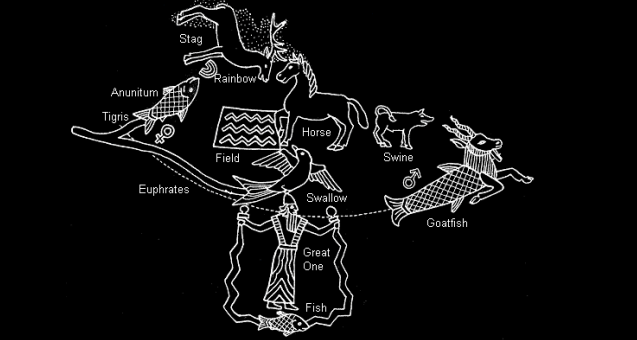
The exaltation of Mars in Capricorn can only be understood from an Indian perspective;
There was considerable inter-relationship between Indus valley civilization and Southern Mesopotamia and the sign for Capricorn is an example, both Mars and Venus have their exaltation's in fish signs and it is likely that the cult of the Fish people took the exaltations as their basis.

The secret places of the planetary exaltations of Mars and Venus then relate to the secrets of the cult of the apsarases and gandharvas;
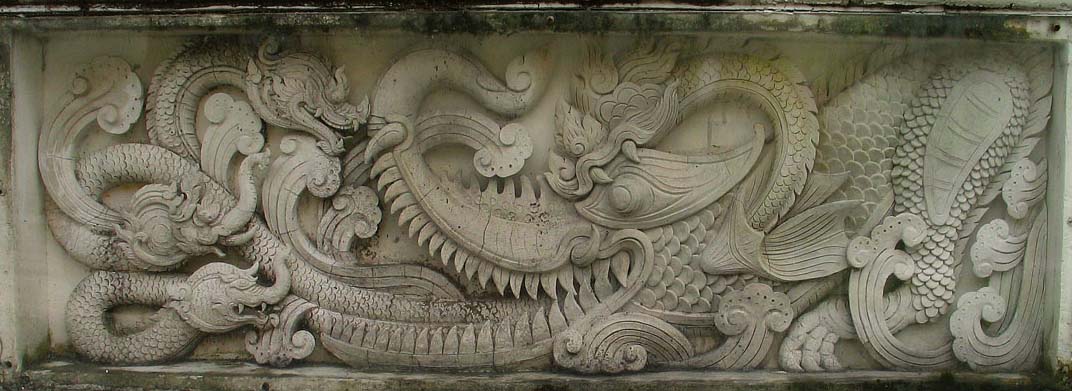
The tradition of the Celestial water nymphs is the remembering of the original alien sex cult as in The Fish that Swam in the Great Bath, the explanation for the origin of the Makara/Capricorn symbol is a strange one and based on it's association with Ghariel crocodile;
That's sort of a cynical explanation, the overall purpose of the visitation of the Apsaras was certainly sex and procreation with unsuspecting humanity, the Apsaras like dancing while the Gandarvah were great musicians, the cult was one of sensuality and pleasure.

I think it correct that the gGhariel/Makara must represent a senior figure of the cult it is more likely to represent the God Varuna himself, who had some similarity with the Sumerian Enki.
In Sumeria the Goddess of the Fish cult was Nanse, it is considered that the Apkallu tradition was first introduced into Mesopotamia through her cult as suggested in The Sumerian Abgal and Nanse's carp actors, apart from being the Goddess of social welfare she was also held to induce sexual intercourse, as the daughter of Enki, this relating to the tradition of the Apsaras, there is an Indian equivalent in Minakshi of the sacred fish pond.
It seems likely that these traditions were ancient even at the time of the founding of the first cities and were already fading into obscurity and the stuff of legend, and there hasn't been anything quite like them since.
The Fish cult
During the Vedic times Varuna, the Vedic water god became the God of the seas and rode on makara, which was called “the water monster vehicle”.
Makara is the vahana (vehicle) of the Ganga - the goddess of river Ganges and the sea god Varuna. It is also the insignia of the love god Kamadeva, Makara is the astrological sign of Capricorn

My research here is derived from trying to understand the reasoning behind Planetary Exaltations, or the secret places of the planets in astrology were they are most empowered, everyone knows were they are understood to have been located without knowing why, in particular i wanted to understand Mars being exalted in 28 degrees Capricorn and Venus having her secret place at 27 degrees Pisces.

The exaltation of Mars in Capricorn can only be understood from an Indian perspective;
Makara is also the emblem of Kamadeva, the vedic god of love and desire. It is also known as ‘Makara-Ketu’ which means “long tailed makara.” It is the tenth sign of the Zodiac, called rāśi in Sanskrit, which is equivalent to the zodiacal sign of Capricorn
The name Kama-deva can be translated as 'god of love'. Deva means heavenly or divine. Kama meaning "desire" or "longing", especially as in sensual or sexual love.
There was considerable inter-relationship between Indus valley civilization and Southern Mesopotamia and the sign for Capricorn is an example, both Mars and Venus have their exaltation's in fish signs and it is likely that the cult of the Fish people took the exaltations as their basis.

`The expression yama means literally ‘twin-born, Yama and his sister YamiÏ are the primeval twins born to the ‘gandharva in the waters’ and Apya yosha, the ‘aqueous (water) nymph’
These details are sufficient to show that Yama and his twin sister YamiÏ belonged originally to the class of apsarases and gandharvas, the Indo-Aryan equivalent of the water nymphs of the Indus Age.
The secret places of the planetary exaltations of Mars and Venus then relate to the secrets of the cult of the apsarases and gandharvas;
The earliest references to ara-makalir ‘divine damsels’ occur in the Cankam anthologies compiled in the early centuries C.E., but containing much older oral traditions.
They hailed from the sky (vani); they dwelt on the mountains (varai) and sported in the mountain streams (aruvi)
They were regarded as mythical,semi-divine beings and were most probably associated with serpent worship as indicated by the constant reference to ara ‘serpent’ , nisr-ara-makalir ‘water nymphs’

The tradition of the Celestial water nymphs is the remembering of the original alien sex cult as in The Fish that Swam in the Great Bath, the explanation for the origin of the Makara/Capricorn symbol is a strange one and based on it's association with Ghariel crocodile;
Why is the makara associated with love? It is not a beautiful creature, whether one looks at the original gharial or the ‘sea-monster’ of mythology.
The association would be incongruous but for the neat explanation offered by the Indus ‘gharial and fish’ motif :
The gharial is a fish-eating crocodile; the FISH signs in the Indus Script represent water nymphs (the ‘Dancing Girls attached to the Sacred Pool’). If the nymph is symbolised as the ‘fish’, what is more natural than symbolising the priest consorting with her as the fish-eating ‘gharial’?
That's sort of a cynical explanation, the overall purpose of the visitation of the Apsaras was certainly sex and procreation with unsuspecting humanity, the Apsaras like dancing while the Gandarvah were great musicians, the cult was one of sensuality and pleasure.

The gharial does not represent the male nymph of the Indus Civilisation,corresponding to the gandharva, the male consort of the apsaras in Indo-Aryan tradition.
The male and the female Indus nymphs are both depicted by identical FISH signs and can be differentiated only by the gender-marking suffixes attached to them Hence the gharial must represent some other person with the right of cohabitation with the female nymphs.
In the present context, that person has to be the senior priest with access to the ‘Sacred Pool’ and the ‘love chambers’ built around it.
The gharial is a symbolic representation of the horned, seated male personage frequently depicted in the Indus art.
I think it correct that the gGhariel/Makara must represent a senior figure of the cult it is more likely to represent the God Varuna himself, who had some similarity with the Sumerian Enki.
Varuna is one of the Adityas and considered to be an asura, when those beings were still god-like and had not yet degenerated into demons. He is also associated with the moon and Soma, in Soma's incarnation as the drink of the gods. Varuna is seen as a white man in golden armor riding a Makara holding a noose or lasso made from a snake.
Varuna is the keeper of the celestial waters, those which flow from the openings in the sky in the form of rain.
In Sumeria the Goddess of the Fish cult was Nanse, it is considered that the Apkallu tradition was first introduced into Mesopotamia through her cult as suggested in The Sumerian Abgal and Nanse's carp actors, apart from being the Goddess of social welfare she was also held to induce sexual intercourse, as the daughter of Enki, this relating to the tradition of the Apsaras, there is an Indian equivalent in Minakshi of the sacred fish pond.
The presiding deity of the temple at Madurai is known as Minakshi. The name is traditionally translated as the ‘Fish-eyed (goddess)’.
However,considering that the insignia of the Pantiya dynasty was ‘twin carp’, it appears that the name of the deity has been Sanskritised from Dravidian min-atci ‘rule by the Fish (goddess)’.
It seems likely that these traditions were ancient even at the time of the founding of the first cities and were already fading into obscurity and the stuff of legend, and there hasn't been anything quite like them since.
The Fish cult
Varuna did have his sinister aspects and was known to punish mortals who did not keep their word. He was the cosmic hangman and his usual method of punishment was to capture the offender with his noose. He was also a lord of the dead, a position he shared with Yama, and could confer immortality if he so chose.
edit on Kam930246vAmerica/ChicagoFriday0430 by Kantzveldt because: (no reason given)
Ganesh was also half elephant like your creature, and there are water rituals associated with him. Maybe studying Ganesh will give some more
understanding.
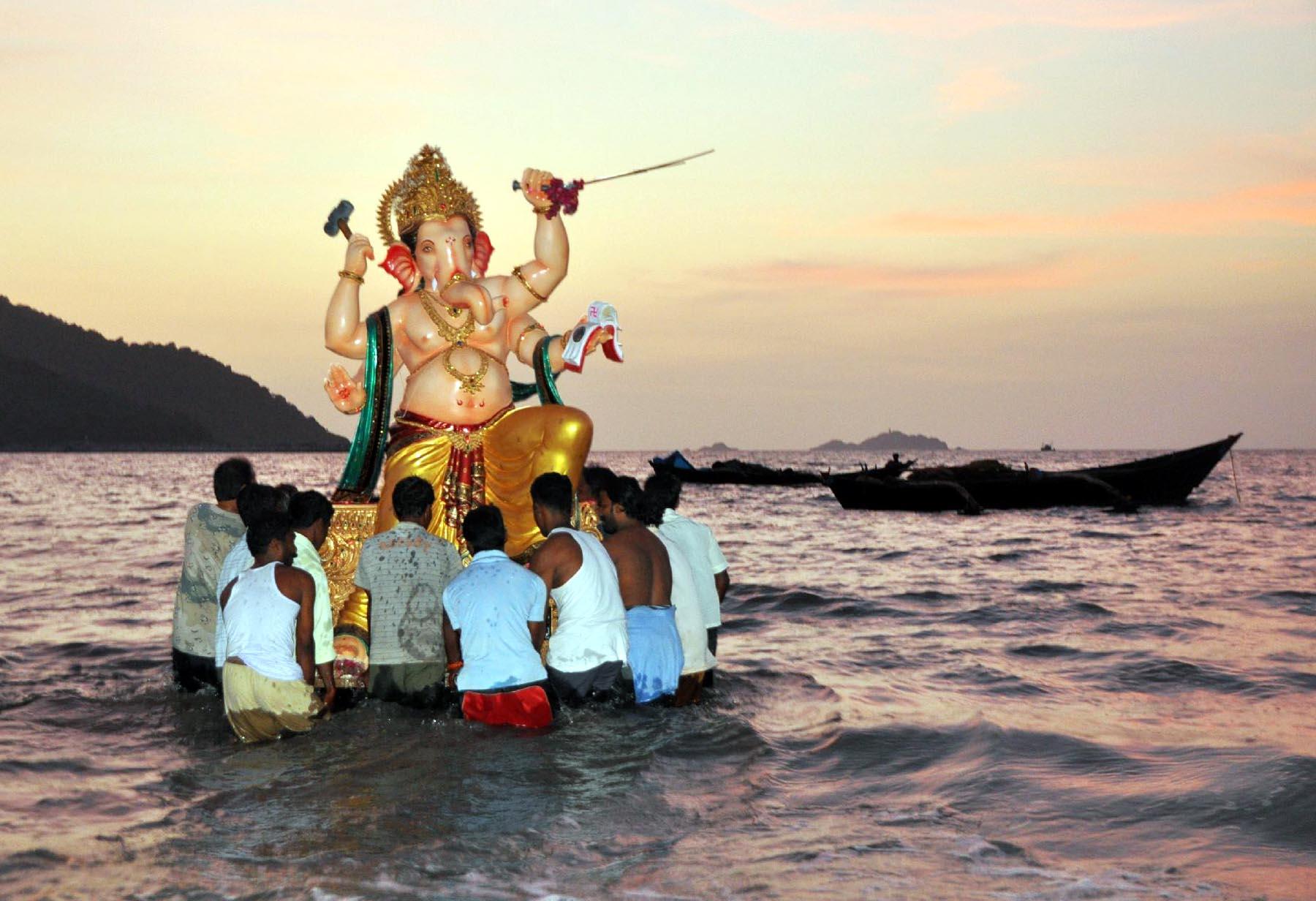
-MM

-MM
a reply to: MerkabaMeditation
Could do but really it was all about the symbolic qualities they were trying to bundle onto Capricorn;
Interestingly there is an Indian version of the Melusine legend which was popular in the Middle Ades particularly in Celtic regions,
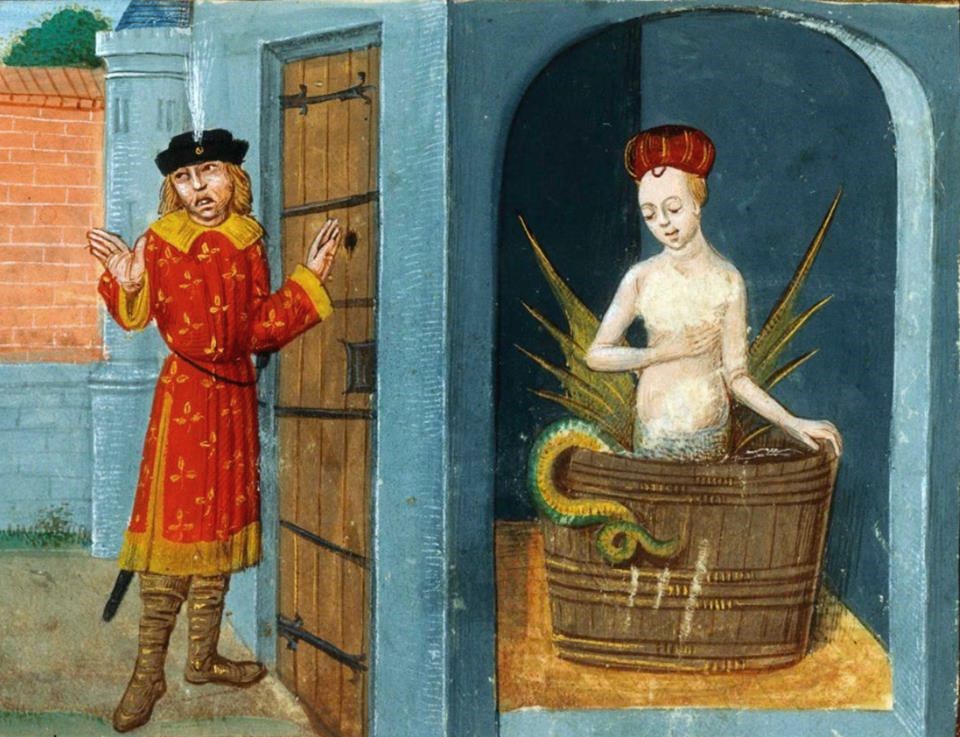
The cult of the bathers was a major secret tradition of the Middle Ages as can be seen here and traced back to this cult of the Apsaras and Gandarvah.
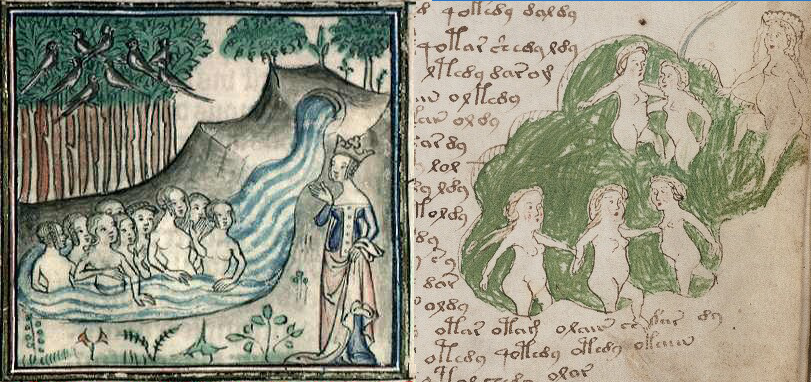
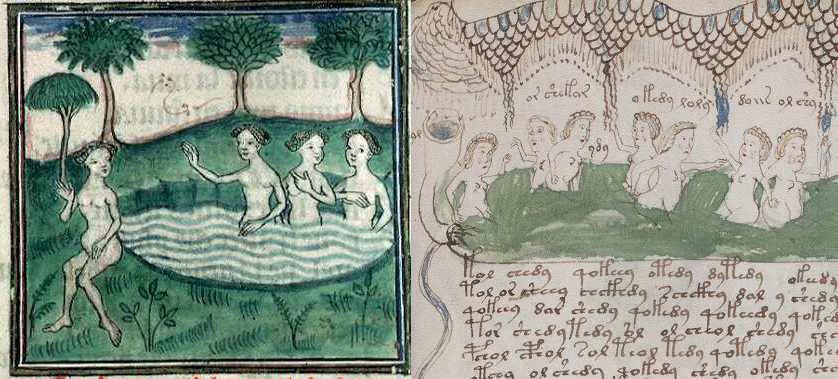
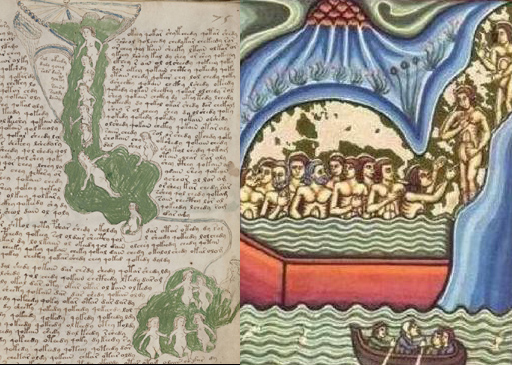
A tradition of the secret lineage.
Could do but really it was all about the symbolic qualities they were trying to bundle onto Capricorn;
Makara It is generally depicted as half terrestrial animal in the frontal part, in animal forms of an elephant, crocodile, stag, or deer, and in the hind part as an aquatic animal, in the form of a fish or seal tail. Sometimes, even a peacock tail is depicted
Interestingly there is an Indian version of the Melusine legend which was popular in the Middle Ades particularly in Celtic regions,
Pururavas, the son of Il|a, falls in love with UrvasiÏ. She consents to be with him but on the condition that she should not be seen naked by him.
The jealous gandharvas produce a flash of lightning when the couple are together, and Pururavas sees UrvasiÏ naked. She disappears instantly. Puru$ravas goes in search of her and, after a long time, finds her in the form of an aquatic bird swimming in a lake with other apsarases. The couple are eventually reunited, and Pururavas himself becomes a gandharva.

The cult of the bathers was a major secret tradition of the Middle Ages as can be seen here and traced back to this cult of the Apsaras and Gandarvah.



A tradition of the secret lineage.
a reply to: rickymouse
In that case the secret place of Mars would involve hiding the sausage...maybe Finnish humour.
In that case the secret place of Mars would involve hiding the sausage...maybe Finnish humour.
a reply to: Kantzveldt
I get a kick out of "experts" who call information like this "mythology". Like ancient people were all completely full of sh!t such that they spent huge amounts of time, energy and resources to thoroughly and pains takingly record totally fictional fairytales every minute of the day for thousands of years. Yeah that makes a lot of sense.
I get a kick out of "experts" who call information like this "mythology". Like ancient people were all completely full of sh!t such that they spent huge amounts of time, energy and resources to thoroughly and pains takingly record totally fictional fairytales every minute of the day for thousands of years. Yeah that makes a lot of sense.
originally posted by: Urantia1111
a reply to: Kantzveldt
people were all completely full of sh!t such that they spent huge amounts of time, energy and resources to thoroughly and pains takingly record totally fictional fairytales every minute of the day for thousands of years. Yeah that makes a lot of sense.
Yeah because thats what we do...
a reply to: Kantzveldt
I find it fascinating that in Western Astrology Capricorn is symbolised by a goat with a fishes tail.
Regarding Exaltations is mathematical in one sense in that a planet is exalted in its own sign, in fall in the sign directly opposite it and in detriment in a sign squaring it exaltation. I attach a site to demonstrate this.
Vedic astrology is different to Western but as around the world the zodiac was a universal, cosmic source of power and understanding for ancient peoples everywhere its importance is unmeasurable for its impact on our world today. The chart here demonstrates the Western approach clearly www.astro.com...
I noticed from another thread about quantum mechanics that it is not established that Einstein was wrong and there is a unity and influence between objects that is unlimited and of course that is the energy the ancients believed fully in.
Regarding the serpents I still think we have a mistranslation somewhere about this and that they were the original world teachers. I suspect they were probably the Druids whom the Church has gone to no end of trouble to completely eradicate from the face of the earth because of their belief in reincarnation, education and importantly, something the church grabbed immediately land ownership. It was they who measured out land for its free allocation to the ordinary people (hence the importance of the measuring rod carried by so many people e.g. angels in the bible etc - they were not carrying these rods all the time to merely mark out the odd temple).
I find it fascinating that in Western Astrology Capricorn is symbolised by a goat with a fishes tail.
Regarding Exaltations is mathematical in one sense in that a planet is exalted in its own sign, in fall in the sign directly opposite it and in detriment in a sign squaring it exaltation. I attach a site to demonstrate this.
Vedic astrology is different to Western but as around the world the zodiac was a universal, cosmic source of power and understanding for ancient peoples everywhere its importance is unmeasurable for its impact on our world today. The chart here demonstrates the Western approach clearly www.astro.com...
I noticed from another thread about quantum mechanics that it is not established that Einstein was wrong and there is a unity and influence between objects that is unlimited and of course that is the energy the ancients believed fully in.
Regarding the serpents I still think we have a mistranslation somewhere about this and that they were the original world teachers. I suspect they were probably the Druids whom the Church has gone to no end of trouble to completely eradicate from the face of the earth because of their belief in reincarnation, education and importantly, something the church grabbed immediately land ownership. It was they who measured out land for its free allocation to the ordinary people (hence the importance of the measuring rod carried by so many people e.g. angels in the bible etc - they were not carrying these rods all the time to merely mark out the odd temple).
a reply to: Urantia1111
It's true, they don't seem to care whether Venus reaches her secret place or not and the land wails...
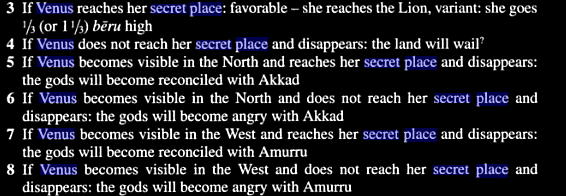
Babylonian Planetary omens
a reply to: Shiloh7
Yes i'd read that article, there is some suggestion of order to the exaltations but not quite enough in my opinion and there are other arbitrary factors involved , Gavin White also looked at the system here and Joanne Conman the Egyptian tradition here
In considering the places of Venus and Mars one certainly had to take the fish symbolism into account with regards to Venus and Anunitum and all the related tales of the Syrian Goddess Atagartis, and if for Venus also for Mars hence i considered the Fish couple of the Indus valley and Dilmun seals.
I looked at the Sumerian goat-fish here, mainly with regards there to how Enki could be represented as the goat and fish.
It's true, they don't seem to care whether Venus reaches her secret place or not and the land wails...

Babylonian Planetary omens
a reply to: Shiloh7
Yes i'd read that article, there is some suggestion of order to the exaltations but not quite enough in my opinion and there are other arbitrary factors involved , Gavin White also looked at the system here and Joanne Conman the Egyptian tradition here
In considering the places of Venus and Mars one certainly had to take the fish symbolism into account with regards to Venus and Anunitum and all the related tales of the Syrian Goddess Atagartis, and if for Venus also for Mars hence i considered the Fish couple of the Indus valley and Dilmun seals.
I looked at the Sumerian goat-fish here, mainly with regards there to how Enki could be represented as the goat and fish.
edit on Kam930247vAmerica/ChicagoSaturday0530 by Kantzveldt because: (no reason given)
edit on
Kam930247vAmerica/ChicagoSaturday0530 by Kantzveldt because: (no reason given)
originally posted by: Kantzveldt
a reply to: Urantia1111
It's true, they don't seem to care whether Venus reaches her secret place or not and the land wails...
Some clues that may warrant further investigation:
Venus is associated with the Hearth Chakra, Anahata, which is called the Sacred Abode of Love.
, and
-Hermes Trismegistus
As above, so below, as within, so without, as the universe, so the soul.”
, and
~Origen, 3rd century CE Egyptian, Christian theologian.
Marvel not if we say that these are within thee, but understand that thou thyself art another world in little, and hast within thee the sun and the moon, and also the stars .
-MM
edit on 5-9-2015 by MerkabaMeditation because: (no reason given)
a reply to: MerkabaMeditation
Yes Anahita or Anunitum or Antu, Venus exalted in Pisces, to see what that meant there is The exaltation of Istar.
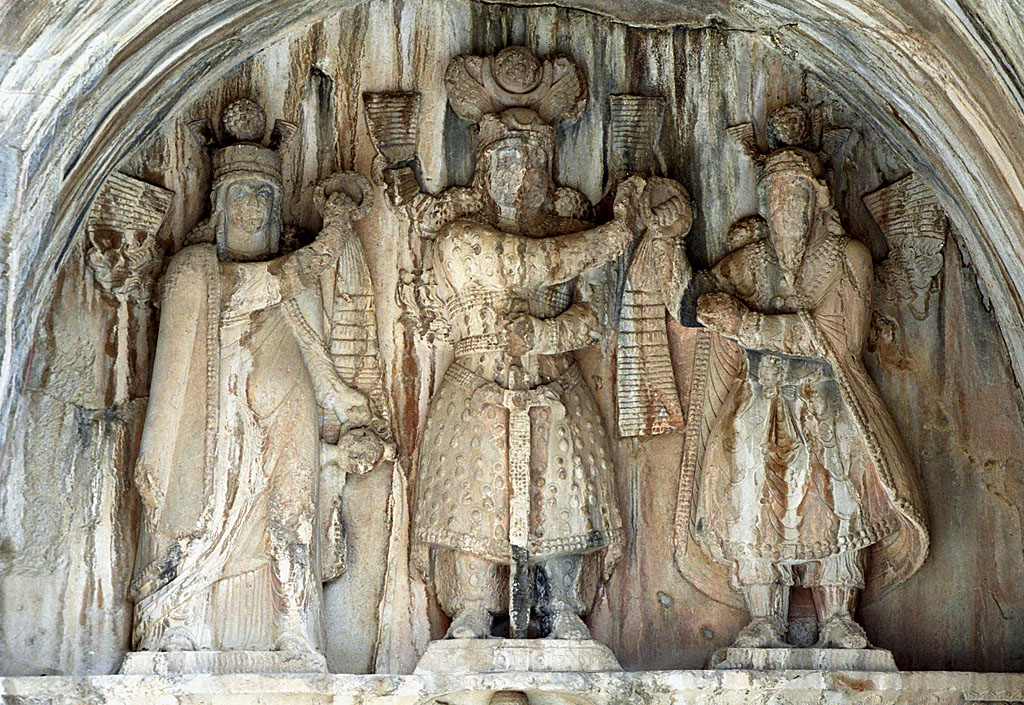
Yes Anahita or Anunitum or Antu, Venus exalted in Pisces, to see what that meant there is The exaltation of Istar.

a reply to: Kantzveldt
It's like a secret sacred dynamic sex cult. How raunchy! Interesting that the male-female notion carries on in later mythologies. Okeanos the watery male and Gaea the earthly female.
I wonder why they are opposite in Brahminism. But the same thing goes, Asuras/Devas are also opposite to the Greeks... Deiwos is sacred (hence the term "divine") whereas the Asuras were the sacred ones to the Vedic culture.
By the way that comparison to the Voynich book seems spot on... so what does that imply?
It's like a secret sacred dynamic sex cult. How raunchy! Interesting that the male-female notion carries on in later mythologies. Okeanos the watery male and Gaea the earthly female.
I wonder why they are opposite in Brahminism. But the same thing goes, Asuras/Devas are also opposite to the Greeks... Deiwos is sacred (hence the term "divine") whereas the Asuras were the sacred ones to the Vedic culture.
By the way that comparison to the Voynich book seems spot on... so what does that imply?
a reply to: Kantzveldt
When it comes to Venus and the "Secret Place", then this may be the Svadhishthana chakra, which has the ocean of samskara, the moon of bindu chakra, the sky from anahata and the stars.Within the Vajrayana tantra systems of Tibet the Svadhishthana chakra is called the Secret Place.
Water is a mode of transportation - also for those magically enclined. Just what happened to the Apostle Philip after he baptized the Ethiopian eunuch? Occult knowledge written in symbols.
-MM
When it comes to Venus and the "Secret Place", then this may be the Svadhishthana chakra, which has the ocean of samskara, the moon of bindu chakra, the sky from anahata and the stars.Within the Vajrayana tantra systems of Tibet the Svadhishthana chakra is called the Secret Place.
originally posted by: Ridhya
By the way that comparison to the Voynich book seems spot on... so what does that imply?
Water is a mode of transportation - also for those magically enclined. Just what happened to the Apostle Philip after he baptized the Ethiopian eunuch? Occult knowledge written in symbols.
-MM
edit on 5-9-2015 by MerkabaMeditation because: (no reason given)
a reply to: Ridhya
It implies that the secret cult of the bathers, Apsaras and Gandarvah, re-emerged in the Middle Ages were the last known traditions from the classical period were those of the Syrian Goddess Atagartis.
The Voynich manuscript bathers appear to be based on contemporary spa illustrations, though they in themselves were strange, see Balneis Puteolanis, but the association with herbalism also goes back to the goat cult of Enki and Ninhursag as related to secret knowledge and also Inanna.
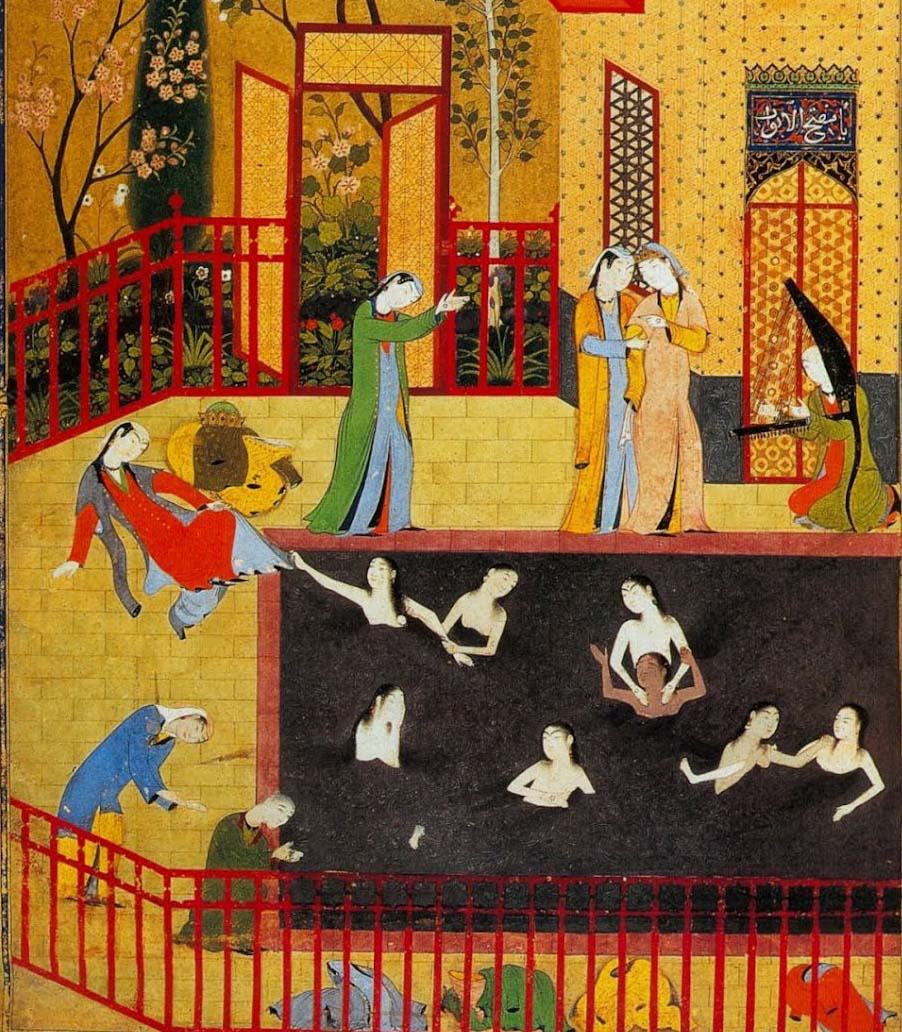
That illustration from Afghanistan doesn't seem so different from the traditions of the Indus great bath tradition, there were understood to be seven Apsaras, and in Middle Ages Europe there also seems to have been a communal meal associated with proceedings.

In Mesopotamia the traditions associated with the cult of the goat-fish were those of the secret garden ruled over by Tasmetu, an aspect of Nanaya the physical incarnation of Inanna.
Illuminated Manuscripts-Bathing
a reply to: MerkabaMeditation
Yes that's suggested with the Makara, water as a mode of transportation, i think in the greater sense that's in terms of carrying forward organic life and thus there are obvious associations with plants and sexuality and all sorts of things.
The Goddess Ganga riding on the Makara seems similar to the Mesopotamian tradition of the dromedary of Tiamat which goes on to become the preferred mode of transport of the whore of Babylon, but that's only because by tradition that was one of the beasts that Ninurta overcame and acquired for himself, the hero of the Apocalypse being Ninurta in all but name.
It implies that the secret cult of the bathers, Apsaras and Gandarvah, re-emerged in the Middle Ages were the last known traditions from the classical period were those of the Syrian Goddess Atagartis.
The Voynich manuscript bathers appear to be based on contemporary spa illustrations, though they in themselves were strange, see Balneis Puteolanis, but the association with herbalism also goes back to the goat cult of Enki and Ninhursag as related to secret knowledge and also Inanna.
Inana speaks "My brother, awe-inspiring lord, let me ride with you to the mountains! Lord of heaven, awe-inspiring lord, lord, let me ride with you to the mountains;
I am unfamiliar with womanly matters, with ....... I am unfamiliar with womanly matters, with sexual intercourse! I am unfamiliar with womanly matters, with kissing! I am unfamiliar with sexual intercourse, I am unfamiliar with kissing!
"Whatever exists in the mountains, let us eat that. Whatever exists in the hills, let us eat that. In the mountains of herbs, in the mountains of cedars, in the mountains of cedars, the mountains of cypresses, whatever exists in the mountains, let us eat that.

That illustration from Afghanistan doesn't seem so different from the traditions of the Indus great bath tradition, there were understood to be seven Apsaras, and in Middle Ages Europe there also seems to have been a communal meal associated with proceedings.

In Mesopotamia the traditions associated with the cult of the goat-fish were those of the secret garden ruled over by Tasmetu, an aspect of Nanaya the physical incarnation of Inanna.
The close affinity between Enki and the Goatfish is manifest on numerous entitlement stones where the Goatfish is often combined with other astral symbols associated with him such as the turtle or the Ram-headed staff
Despite the strong affinity to Enki, astrology texts list the regent of the Goatfish as the little-known goddess Tašmetu. Her name is derived from the Akkadian word šamû, and can be roughly translated as ‘the granter of requests’
Tašmetu shares aspects with Nanaya, particularly in her associations with sex and wisdom. Tašmetu is mentioned in association with both sexual attractiveness and wisdom in first-millennium prayers from the city of Kalhu. The same prayer also describes Tašmetu as a "goddess of sex appeal and sensuality" and "mistress of the lovers in the inhabited world"
Illuminated Manuscripts-Bathing
a reply to: MerkabaMeditation
Yes that's suggested with the Makara, water as a mode of transportation, i think in the greater sense that's in terms of carrying forward organic life and thus there are obvious associations with plants and sexuality and all sorts of things.
The Goddess Ganga riding on the Makara seems similar to the Mesopotamian tradition of the dromedary of Tiamat which goes on to become the preferred mode of transport of the whore of Babylon, but that's only because by tradition that was one of the beasts that Ninurta overcame and acquired for himself, the hero of the Apocalypse being Ninurta in all but name.
edit on Kam930247vAmerica/ChicagoSaturday0530 by Kantzveldt because: (no reason given)
a reply to: Kantzveldt
The sanskrit name of Capricorn is Makara and means "crocodile" because the more ancient symbol for Capricorn was a creature with the upper body of a goat (with one horn) and the lower body of a crocodile (sanskrit "Makara"). The single horn is a very ancient interpretation of the unicorn symbol, and thus the Capricorn symbolizes a man's rise from the animalistc & primal mind (the reptile) to the spirtual mind (the unicorn). Also, the lower body - the crocodile - is beneath the waters which symbolizes the astral plane (passions, emotions, desires) and the upper body is above the waters (a more spiritual mindset).
And so it is so perfectly symbolized in your painting, where passionate humans indulge in matters of the flesh symbolized by the bathing and thus have given in to their lower chakras - the Root chakra which is the primal mind is red in color and so is the veil above the bathers. We see that some have left the bath and gone "above the waters" symbolized by the green colored veil which is the color of the Hearth chakra which is above the waters in symbology - these are the ones that have left their animalistic ways in search of spiritual enlightenment. Notice that below the green veil is not another tub but a bed for two, this symbolizes the marrige of the male and the female in the Hearth Chakra - which is the Star of David - which is the male symbol (upward facing triangle) on top of the female symbol (downward facing triangle), the Star of David is depicted inside the Hearth chackra symbol.
-MM
The sanskrit name of Capricorn is Makara and means "crocodile" because the more ancient symbol for Capricorn was a creature with the upper body of a goat (with one horn) and the lower body of a crocodile (sanskrit "Makara"). The single horn is a very ancient interpretation of the unicorn symbol, and thus the Capricorn symbolizes a man's rise from the animalistc & primal mind (the reptile) to the spirtual mind (the unicorn). Also, the lower body - the crocodile - is beneath the waters which symbolizes the astral plane (passions, emotions, desires) and the upper body is above the waters (a more spiritual mindset).
And so it is so perfectly symbolized in your painting, where passionate humans indulge in matters of the flesh symbolized by the bathing and thus have given in to their lower chakras - the Root chakra which is the primal mind is red in color and so is the veil above the bathers. We see that some have left the bath and gone "above the waters" symbolized by the green colored veil which is the color of the Hearth chakra which is above the waters in symbology - these are the ones that have left their animalistic ways in search of spiritual enlightenment. Notice that below the green veil is not another tub but a bed for two, this symbolizes the marrige of the male and the female in the Hearth Chakra - which is the Star of David - which is the male symbol (upward facing triangle) on top of the female symbol (downward facing triangle), the Star of David is depicted inside the Hearth chackra symbol.
-MM
edit on 5-9-2015 by MerkabaMeditation because: (no reason given)
edit on 5-9-2015 by MerkabaMeditation because: (no reason
given)
a reply to: MerkabaMeditation
I think things did probably tend toward spiritual interpretation in later times as well as the allegorical but i don't think that was the original basis, i believe in the actual physical Apsaras or the beings that gave rise to the legend rather than the later dalliance with Angels, things tended to drift toward the Hebrew perspective, case in point here's Mary in the bath which would be relating her to the great Venusian seductress...
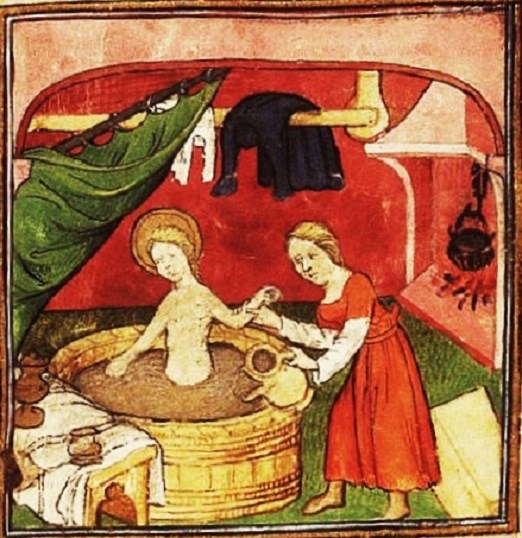
It also seems the case that the secret garden tradition of Tashmetu based upon the Capricorn exaltation of Mars and the lovers became the basis for the Islamic garden of paradise populated by Apsaras...spirituality gone mad

I think things did probably tend toward spiritual interpretation in later times as well as the allegorical but i don't think that was the original basis, i believe in the actual physical Apsaras or the beings that gave rise to the legend rather than the later dalliance with Angels, things tended to drift toward the Hebrew perspective, case in point here's Mary in the bath which would be relating her to the great Venusian seductress...

It also seems the case that the secret garden tradition of Tashmetu based upon the Capricorn exaltation of Mars and the lovers became the basis for the Islamic garden of paradise populated by Apsaras...spirituality gone mad

new topics
-
God's Righteousness is Greater than Our Wrath
Religion, Faith, And Theology: 3 hours ago -
Electrical tricks for saving money
Education and Media: 6 hours ago -
VP's Secret Service agent brawls with other agents at Andrews
Mainstream News: 8 hours ago -
Sunak spinning the sickness figures
Other Current Events: 8 hours ago -
Nearly 70% Of Americans Want Talks To End War In Ukraine
Political Issues: 8 hours ago -
Late Night with the Devil - a really good unusual modern horror film.
Movies: 10 hours ago
top topics
-
VP's Secret Service agent brawls with other agents at Andrews
Mainstream News: 8 hours ago, 9 flags -
Cats Used as Live Bait to Train Ferocious Pitbulls in Illegal NYC Dogfighting
Social Issues and Civil Unrest: 12 hours ago, 8 flags -
Electrical tricks for saving money
Education and Media: 6 hours ago, 4 flags -
HORRIBLE !! Russian Soldier Drinking Own Urine To Survive In Battle
World War Three: 16 hours ago, 3 flags -
Nearly 70% Of Americans Want Talks To End War In Ukraine
Political Issues: 8 hours ago, 3 flags -
Sunak spinning the sickness figures
Other Current Events: 8 hours ago, 3 flags -
Late Night with the Devil - a really good unusual modern horror film.
Movies: 10 hours ago, 2 flags -
The Good News According to Jesus - Episode 1
Religion, Faith, And Theology: 13 hours ago, 1 flags -
God's Righteousness is Greater than Our Wrath
Religion, Faith, And Theology: 3 hours ago, 0 flags
active topics
-
Nearly 70% Of Americans Want Talks To End War In Ukraine
Political Issues • 13 • : Freeborn -
Mood Music Part VI
Music • 3101 • : ThatSmellsStrange -
VP's Secret Service agent brawls with other agents at Andrews
Mainstream News • 41 • : ThatSmellsStrange -
HORRIBLE !! Russian Soldier Drinking Own Urine To Survive In Battle
World War Three • 32 • : DaRAGE -
New whistleblower Jason Sands speaks on Twitter Spaces last night.
Aliens and UFOs • 55 • : baablacksheep1 -
Cats Used as Live Bait to Train Ferocious Pitbulls in Illegal NYC Dogfighting
Social Issues and Civil Unrest • 20 • : Asher47 -
Electrical tricks for saving money
Education and Media • 4 • : Lumenari -
DONALD J. TRUMP - 2024 Candidate for President - His Communications to Americans and the World.
2024 Elections • 514 • : WeMustCare -
The Acronym Game .. Pt.3
General Chit Chat • 7744 • : bally001 -
Truth Social goes public, be careful not to lose your money
Mainstream News • 128 • : Astyanax
22

